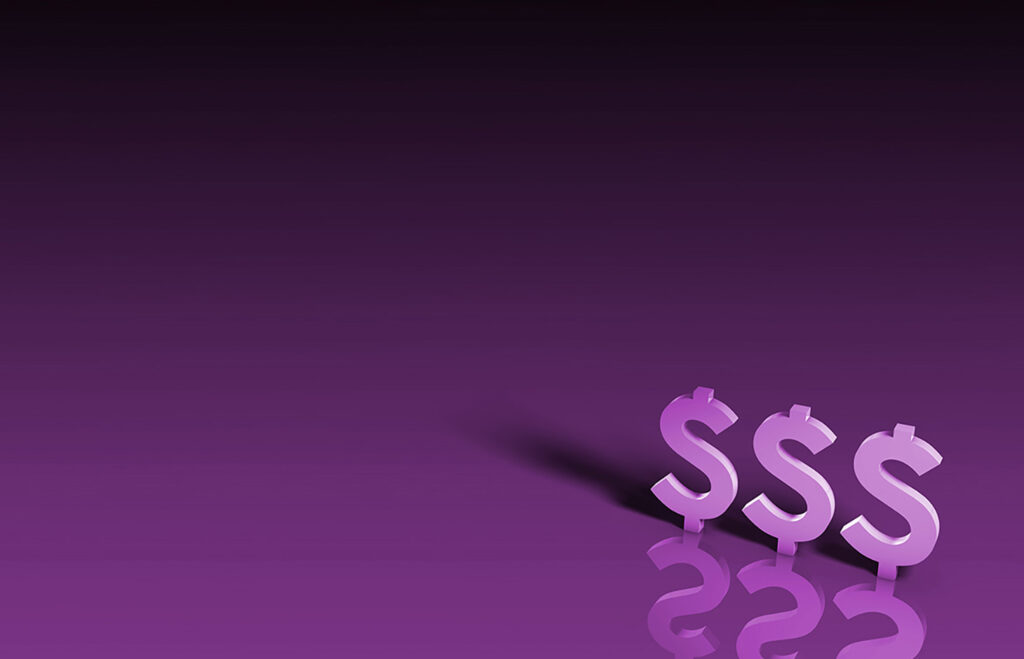Cash flow is the money that moves in and out of your business on a regular basis. It flows in when you receive payments from customers or cash injections from investors. It flows out when you pay your staff, purchase supplies, and cover your lease and the other costs of doing business. The important thing is to find balance with this continual flow.
A balanced cash flow enables your business to continue operating successfully over the long term. And if you can get to the point where you have more money coming in than you have going out, even better. You can enjoy your profits and re-invest toward the growth of your business.
But what if you’re struggling to manage your cash flow? The reality is, about 82 percent of businesses fail because of poor cash flow management.
If your business fails to find balance and is spending more than it’s making, it will eventually reach a breaking point. And the risks of poor cash flow are far-reaching.
Risks of poor cash flow
From an operational standpoint, poor cash flow can have negative implications for your business model and your human resources. An inability to cover variable and fixed expenses can leave your business without the services, supplies, and infrastructure it needs to function at its best—or at all.
Suppliers often stop extending credit when payment stops. They may even stop doing business with you altogether.
If you can’t afford to pay your staff properly, at best you’ll lose talent to businesses that are able to compensate more competitively. At worst, if you can’t afford to pay them at all, your business opens itself to lawsuits, not to mention potential public relations ordeals. It may also mean the lifespan of your business has come to its end.
Groupon is a prime example of a business that has seen struggles in terms of cash flow. While this e-commerce marketplace claimed to have free cash flow of around $155 million in a 2012 financial statement, this number was quite misleading.
Groupon’s business model involves merchants paying Groupon up-front for deals offered to customers through its site. This means Groupon has a large amount of positive working capital. The business reported it uses the cash flow provided by its merchant payment terms to fund its working capital needs.
However, in line with its terms, Groupon must also pay its merchants when deals are redeemed by customers. So essentially, it was spending money it didn’t actually have to fund its daily operations and growth efforts.
If Groupon had settled its accounts, it would have shown a loss of quite a lot of money, putting the business into a negative cash flow situation. Groupon’s share prices were up over $24 near the beginning of 2012, and by the end of that year, they were under $5. They haven’t recovered much since, and are currently sitting at just over $3.
While there are a number of reasons why Groupon lost its footing—including legal issues and high customer-churn—its murky cash flow situation likely didn’t inspire a lot of confidence in investors. This cash flow situation also undoubtedly presented problems in terms of strategic planning and management.
Beyond a business’ daily operations, poor cash flow can restrict growth and long-term success. A lack of cash may mean your business will have to pass on opportunities such as technology upgrades, unique marketing avenues, or perhaps entrance into new demographics and markets.
And if you can’t afford the resources and personnel to properly support scaling up, what’s the point of trying at all?
Unfortunately, a lot of businesses suffer from poor cash flow without even realizing the full extent of their business disadvantage.
Fragmented financial data and poor visibility of a business’ day-to-day operations, outcomes, revenue leakage, and incorrectly recognized revenue are huge contributors to a precarious cash flow situation, and they result in an unclear picture of how a business is really performing. They also lead to poor business decisions based on incomplete or inaccurate data, and an inability to properly forecast and plan for the future.
The importance of cash flow reporting and projection
Subscription businesses operating with rudimentary and legacy billing systems often struggle with data gaps. These gaps can make it very challenging to have an accurate view of a business’ cash flow situation.
Churn rate is a prime example. Your accounting team might see your recurring revenue business has gained 100 new subscribers in the past month. This seems like a positive, and it might be, but it’s offset by your churn rate.
Not only does customer churn cost your business in terms of lost future revenue, but it also has additional costs in terms of labor. Personnel will likely make attempts to retain the customer, and if that doesn’t pan out, there’s the effort of having to close accounts and ensure payment is up to date.
Without a complete awareness of your business’ churn rate, it’s impossible to accurately determine and project your cash flow. And operating a business based on an improperly calculated cash flow can be a dangerous endeavor.
Your subscription business’s collection ratio is another good example of vital cash-flow-related data. If your staff is unable to easily and frequently keep tabs on what you invoice versus what you collect, you run the risk of revenue leakage—a huge contributing factor to poor cash flow. Revenue leakage can also happen as a result of invoicing errors.
The fragmented data so common with legacy billing solutions can easily lead to invoices populated with missing or outdated information. This can result in late and missed invoices.
Finally, fragmented data and poor visibility of your business’s comprehensive customer and financial situation make it difficult to perform effective cash flow forecasting. Without an accurate picture of your business’s next few months of cash flow, it can become difficult to handle growth in volumes, and report on that growth as necessary.
Decisions and actions can easily be made that may not be in the best interest of your business, and you could end up in a situation where you can’t cover the costs of your basic operations. You may have to drastically cut costs, let go of staff, or even close your doors in extreme cases.
You may also be in the risky situation of being unable to properly determine your recognized versus unrecognized revenue. This is especially crucial for subscription-based businesses.
Uberflip is a B2B SaaS business that was facing the challenges of unrecognized revenue. The business—which provides tools to help businesses create a content journey for their customers—was growing quickly and needed a billing solution that could accommodate its growth. Its invoicing requirements were becoming unmanageable, and the business had limited ability to track and report on its earned and deferred revenue.
Since implementing a dynamic billing platform, Uberflip has saved 40 hours a month thanks to automated billing and accounting processes. Even more importantly, its revenue recognition is now handled automatically and its new reporting and forecasting capabilities enable it to have the insight it needs to improve its operational efficiency and customer service.
The ability to continually perform accurate financial reporting and forecasting is vitally important for budgeting and keeping your business on a successful growth track. However, this can be difficult—if not impossible—without the proper financial technology infrastructure.
What can a business do to mitigate cash flow risks?
Investing in a dynamic billing platform can give your financial team the in-depth visibility and accurate data it needs to properly determine your current cash flow, project your future cash flow, and provide sage financial guidance to your entire team.
Robust billing support can also serve as a single source of financial truth—accurate, up-to-date financial information for your business. This eliminates the risks associated with having multiple sets of sometimes varying data across your business’ departments, and can serve to reduce your business’ human-made information errors.
Using the data pulled from across your entire business, comprehensive billing platforms enable the automation of billing and dunning management. Your customers will receive timely and accurate invoicing, as well as reminder emails surrounding their payment deadlines. Not only will this automation reduce your labor and manual mistakes—which will ultimately save your business time and money—but it also improves the likelihood of timely payment.
When bills arrive on time, as expected, and without error, a level of trust is established with your customers. This trust can ultimately result in increased satisfaction and engagement as well as reduced churn.
Dynamic billing platforms also enable businesses to perform effective, ongoing monitoring for collection assurance. Full calendar visibility of all upcoming bills, payment deadlines, failed payment attempts, and upcoming card expiries can enable your financial team to review everything for accuracy, ensure all automated processes are progressing as expected, and perform follow-ups as necessary.
Having access to a comprehensive financial calendar also allows for reliable revenue predictability. Your financial stewards will be able to review your active customers and subscriptions and forecast all of your business’ projected invoices for months to come. They’ll have the ability to see, down to the day, how much your business can expect to invoice, and how much you can expect to collect from those invoices. This is invaluable cash flow information to have when you’re performing business planning and reviewing—potentially costly—growth opportunities.
With billing and cash flow forecasting taken care of, billing platforms go even further by enabling your team to track your business’s individual revenue streams to see exactly how much cash is flowing in from your different products and services. This enables your business to make good decisions about enhancing, altering, or even eliminating certain offerings based on their profitability.
The level of automation, granular vision, and reporting dynamic billing platforms provide can enable your business to mitigate the risks associated with cash flow.
Keep the subscription cash flowing
Having an accurate awareness of the amount of cash flowing into and out of your subscription businesses at all times is key to creating an effective budget that will lead your business to growth.
Implementing a dynamic, automated billing platform can help your business to ensure more financial accuracy and better financial visibility. It will greatly reduce human-made errors, increase your reporting and forecasting capabilities, and streamline your customer service. This leads to a balanced cash flow situation, and more customers staying and happily engaging with your business. The right fintech tools can ensure your business continues to retain its competitive advantage and scale up with success.







